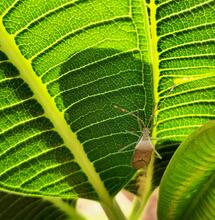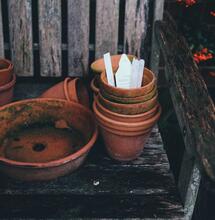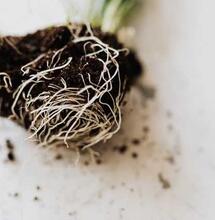Powdery Mildew

Powdery mildew is a common fungal disease that can affect many plants, reducing your flowers and fruit quality and quantity. When powdery mildew affects your plants, a layer of fungus develops on the leaves. Mildew is constructed of thousands of microscopic spores effortlessly transmitted to other plants via contact transfer or the weather.
Powdery Mildew appears as light greyish white powdery marks, generally found on the top of leaves. However, it can also occur in other places such as the underneath of leaves, stems, flowers, fruit or vegetables. The marks will quickly spread over the plant if it is left untreated. The newest growth will be the most susceptible to attack.
Powdery Mildew loves warm, humid environments. Insufficient light and lousy air circulation will also contribute to the perfect conditions for powdery mildew.
If left unchecked, it can severely damage your plants, denying them water and nutrients. Typical damage you will experience includes yellowing or withered leaves and distortion. Some plants will also weaken, experience stunted growth and fail to flower.
Powdery Mildew spores can linger and cause new outbreaks. Dormant spores in aged plant matter around your new plants can quickly transfer and start a new issue.
Powdery Mildew fungus loves the conditions in a grow room and so it is essential to stay on top of things to keep it away.
- Poor Air Circulation in a congested grow room will be perfect for powdery mildew.
- Low light conditions are a common cause of Powdery Mildew.
- Giving plants too much fertiliser can cause them to grow too fast. This can cause the onset of a powdery mildew outbreak.
- Fans or ventilation systems can quickly spread fungal spores through your grow room.
- Powdery Mildew loves the humidity in the grow room.
Preventing Powdery Mildew
When it comes to preventing powdery mildew, prevention is the best cure.
- Keep light spread even to avoid any shady spots in the grow room.
- Prune congested areas to increase air circulation and reduce humidity.
- Space plants evenly to isolate infections and reduce the risk of the fungus spreading.
- Use an adequate ventilation system to encourage beneficial air circulation.
- Use grow light timers to ensure that plants get enough light.
- Carefully monitor your feed strength and frequency, so plants grow steadily, reducing any risk of infection.
- Clean your grow room thoroughly if you are encountering powdery mildew. It is also best practice to clean it after each harvest or three months.
How to Control Powdery Mildew
Once plants have become seriously infected, it's challenging to eliminate the disease.
Remove and destroy all infected greenery and fruit. Do not compost any diseased plant material as powdery mildew spores can still spread to other plants through composted materials.
- Prune off any infected plant areas, and then sterilise your pruners before using them again.
- Sulfur, lime-sulfur, neem oil, and potassium bicarbonate can be used as an organic treatment for powdery mildew. They are most successful if used as a preventive measure or early on.
- Mix one teaspoon of baking soda in 250ml of water and spray your plants. This treatment will kill any fungus that it comes into contact with.
- Milk spray is also an excellent DIY remedy. Dilute milk and water at a 1:10 ratio. Spray the plant as a preventative measure or when symptoms are very early on.



.png)
